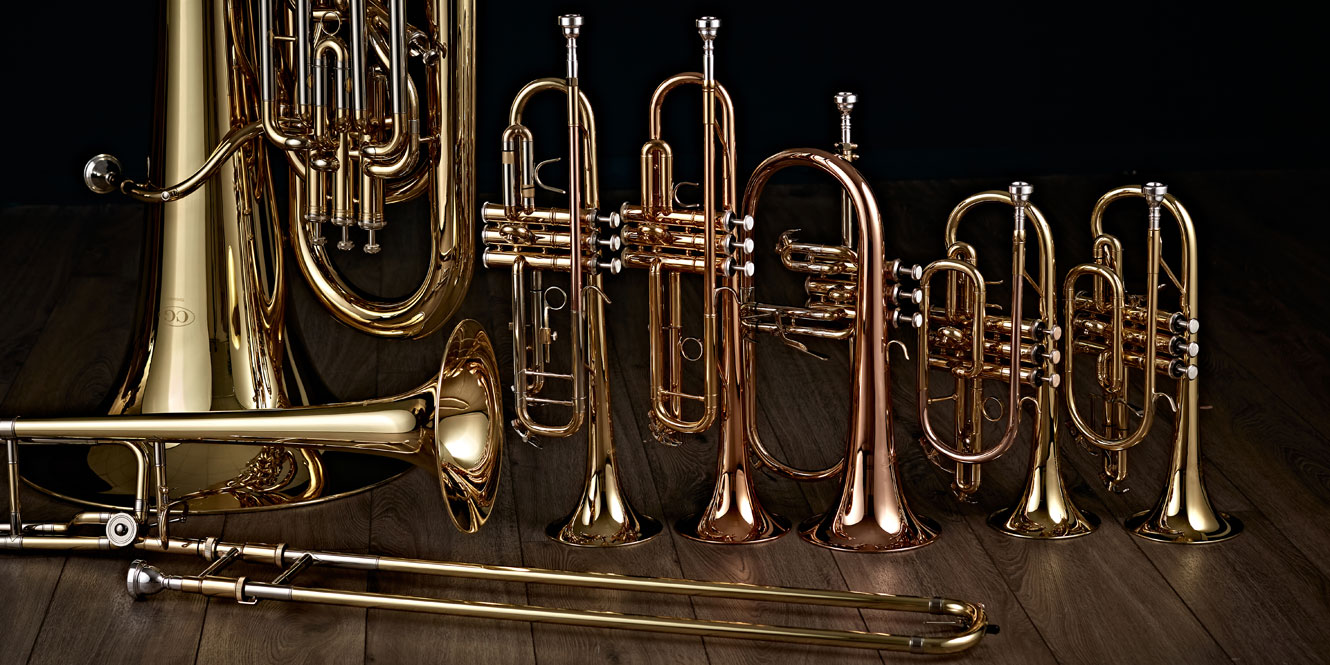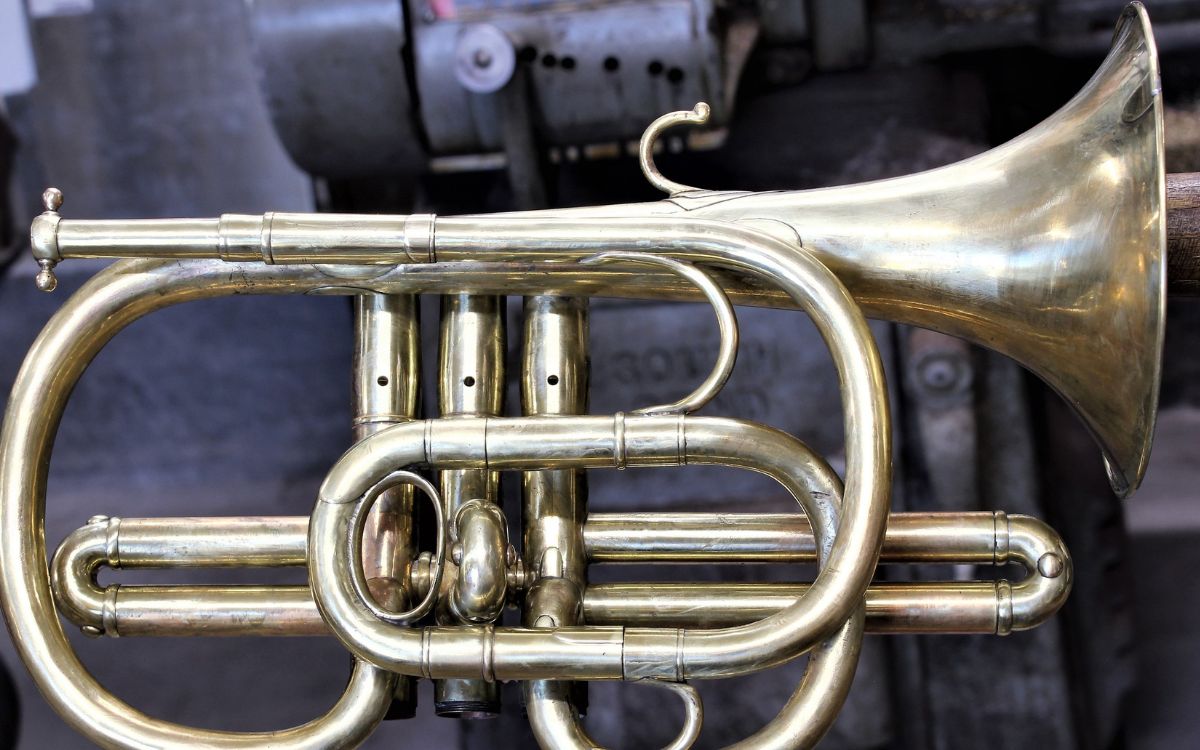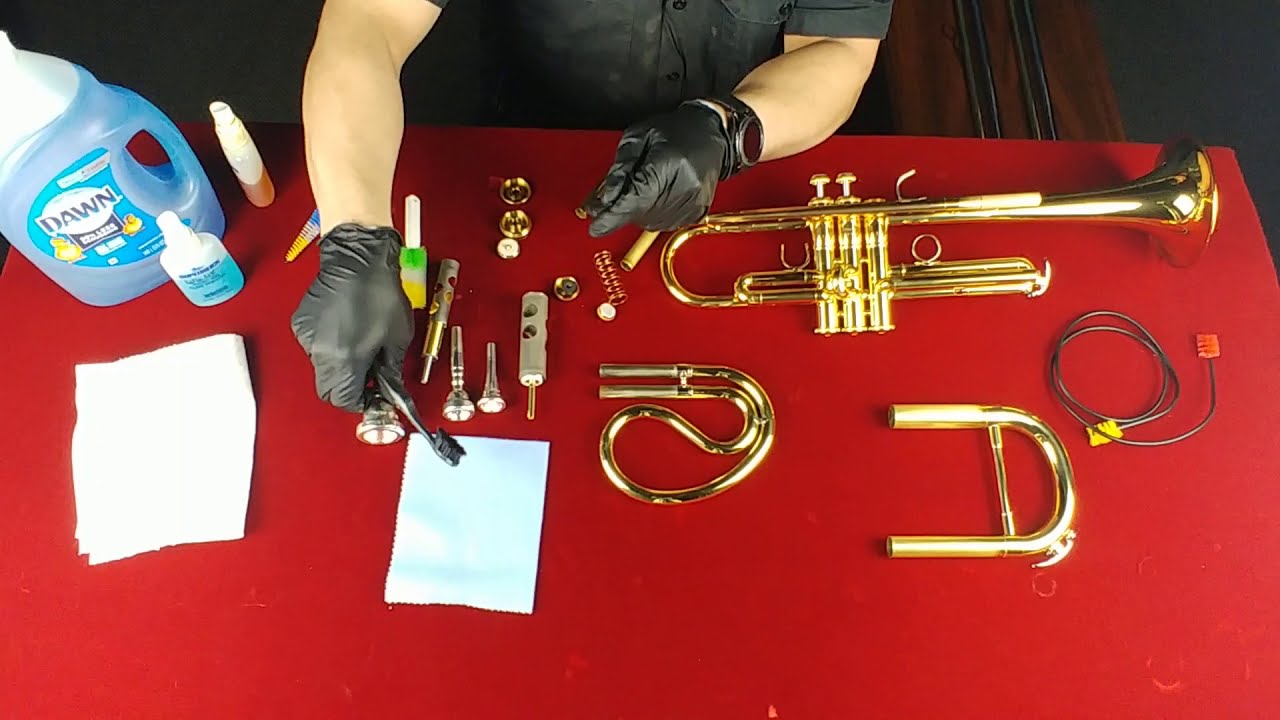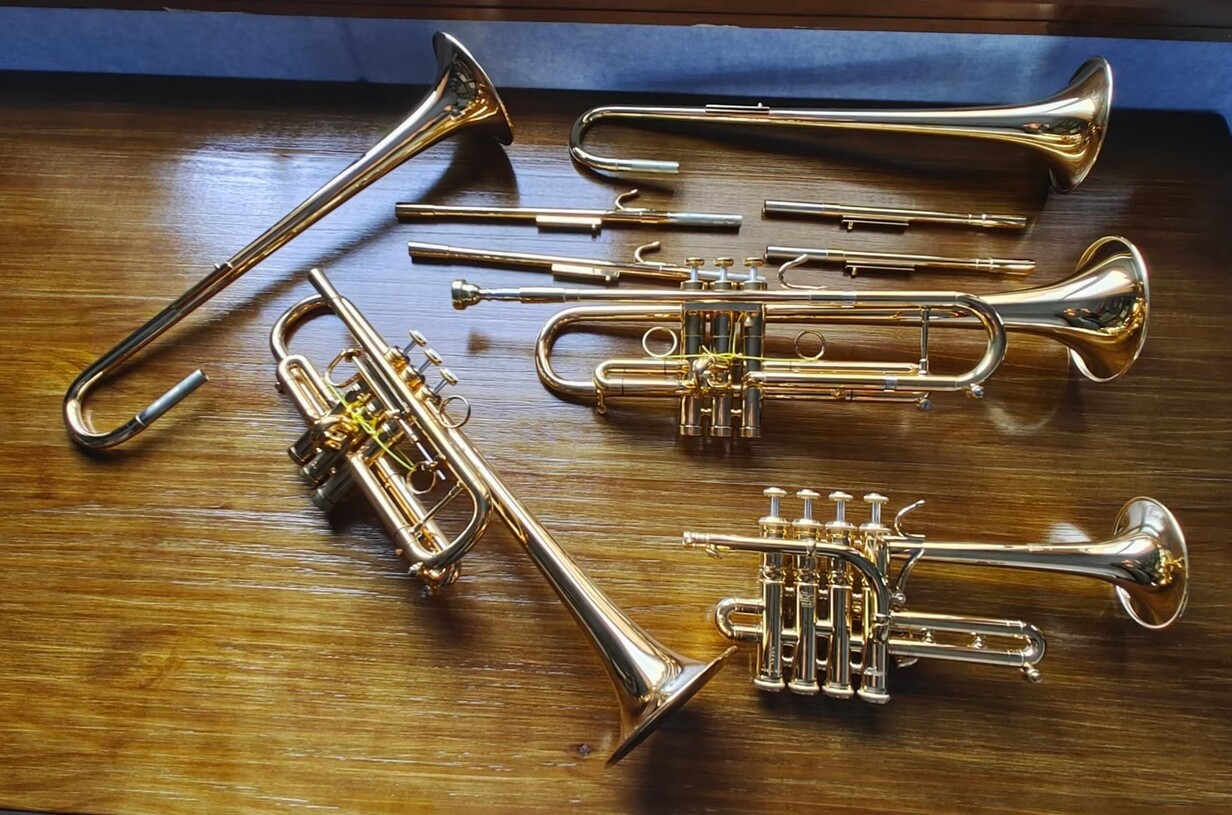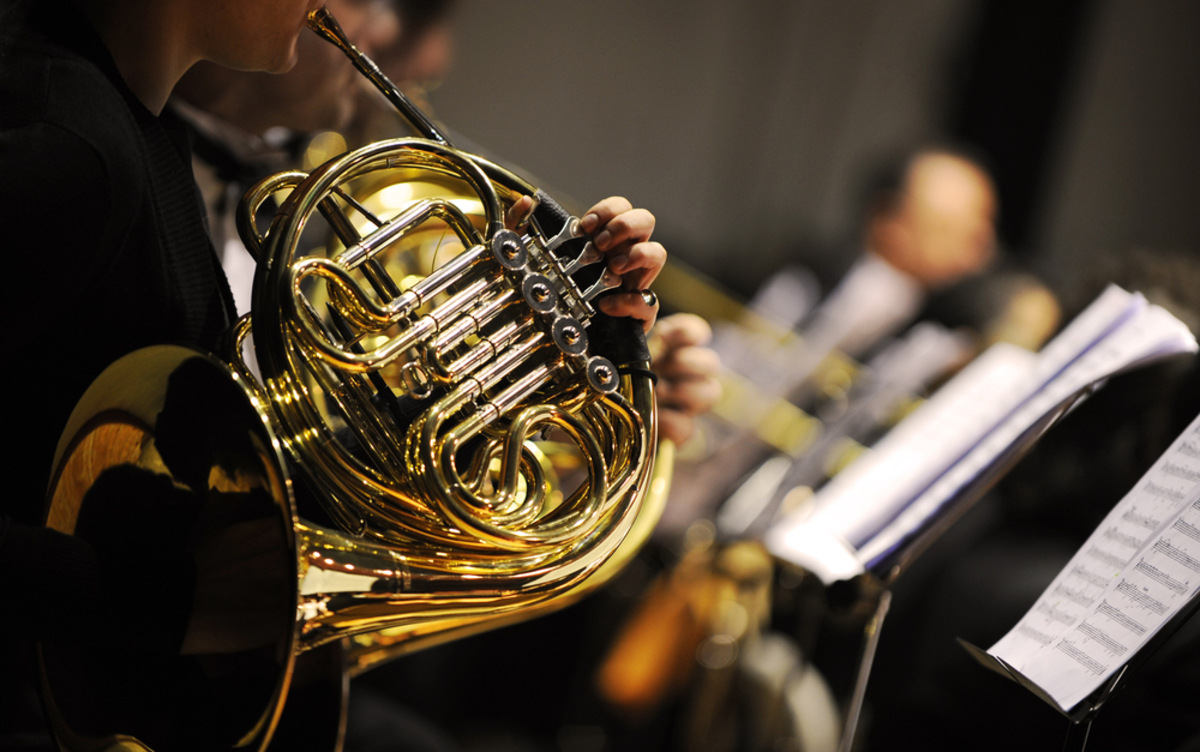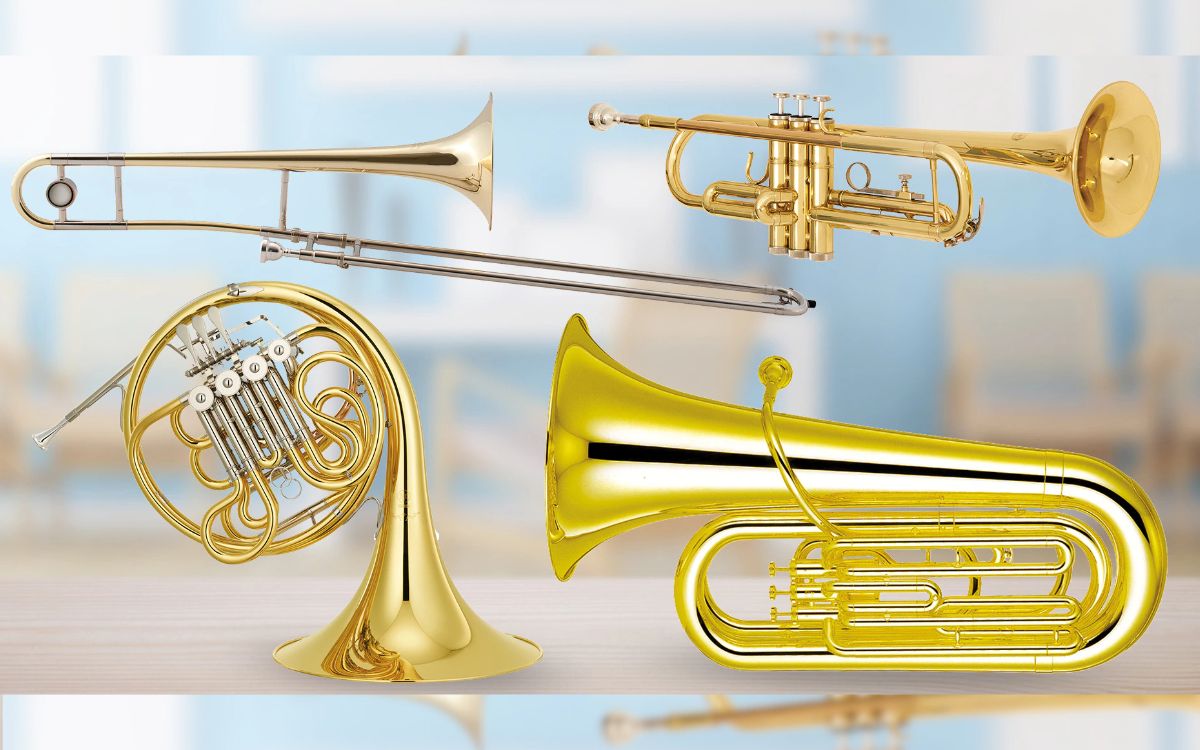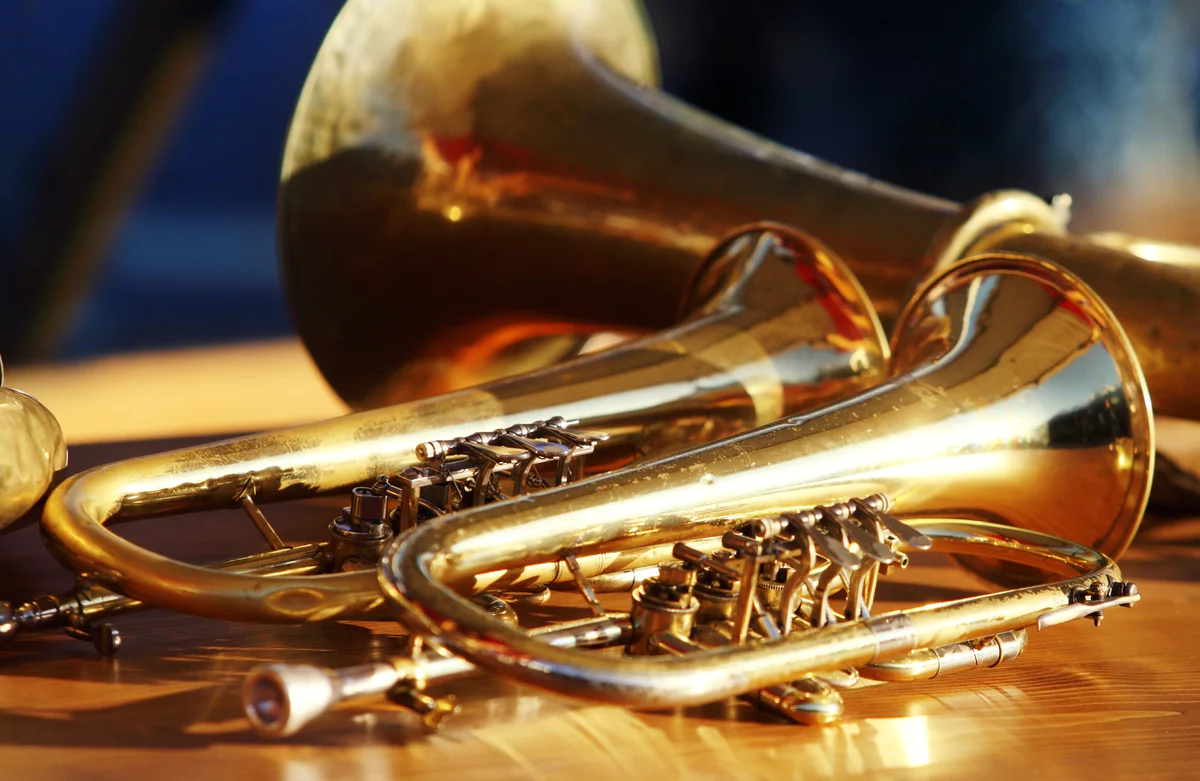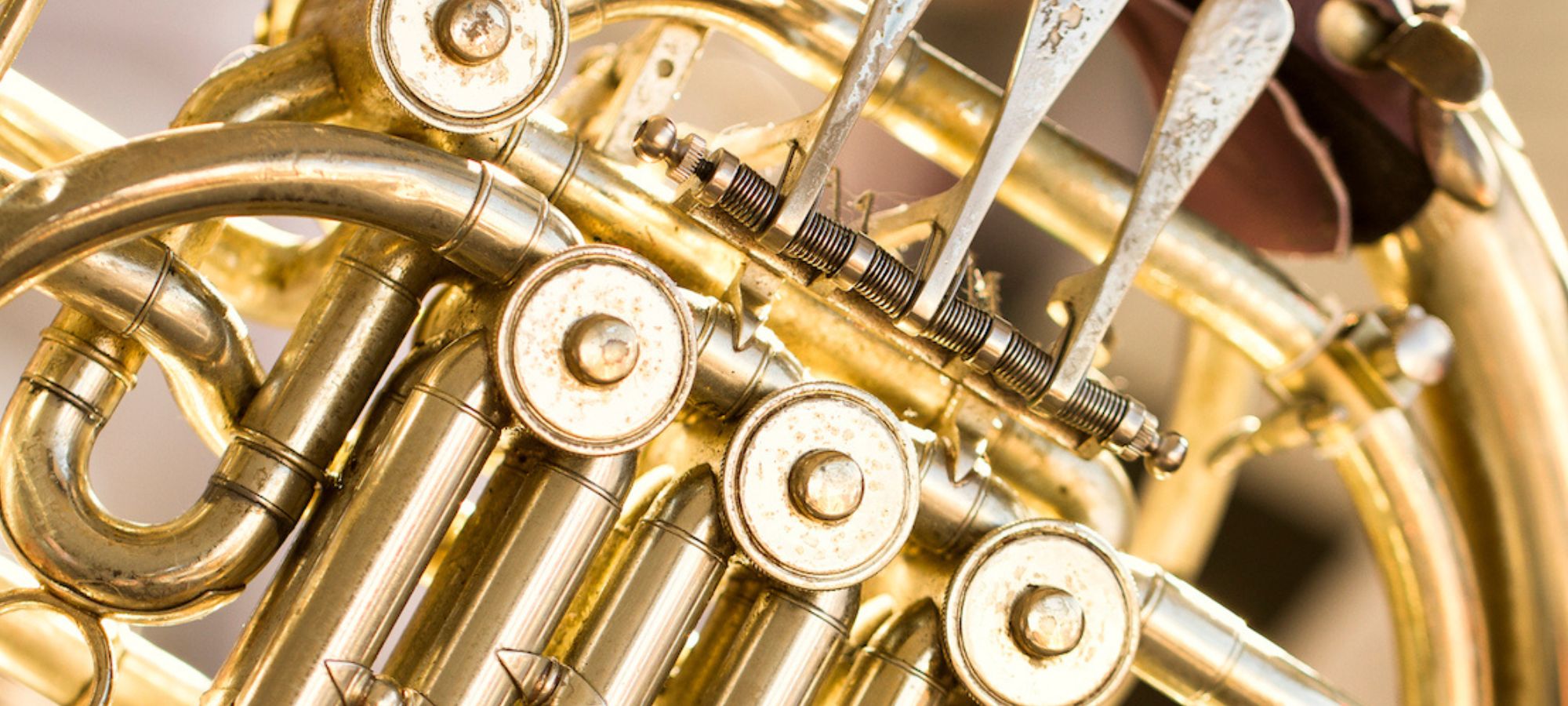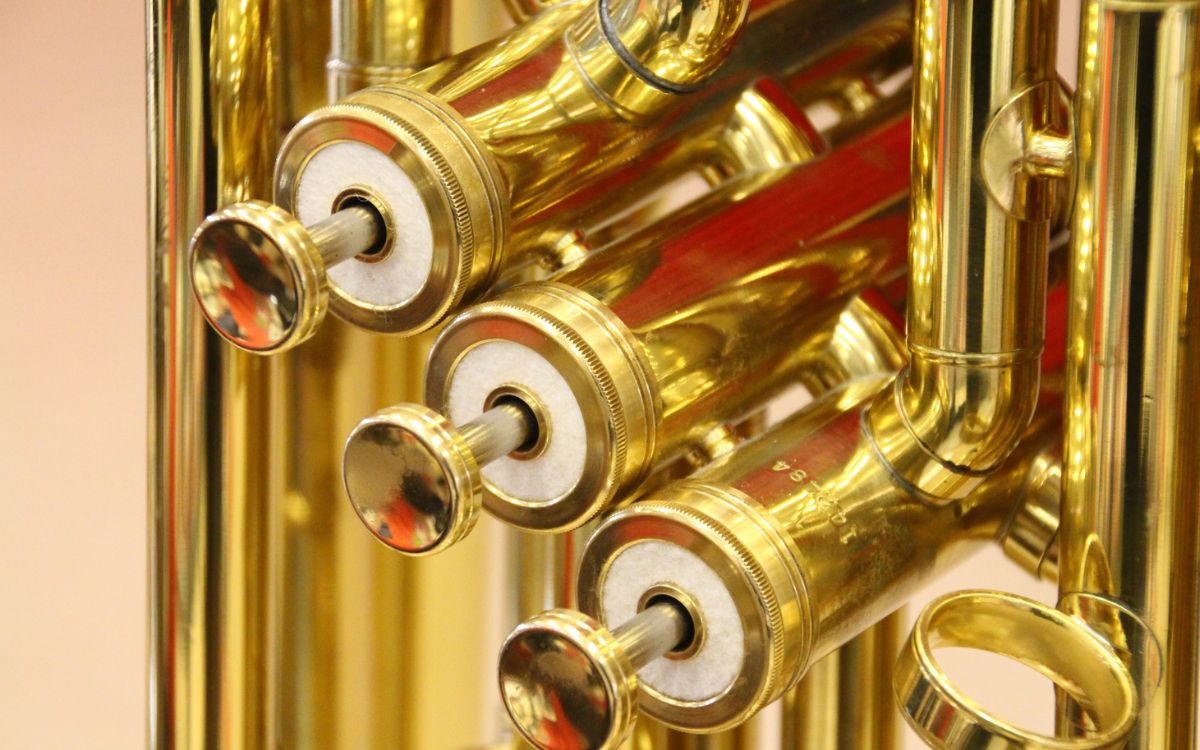Home>Instruments>Brass Instruments>How Do Brass Instruments Change Notes
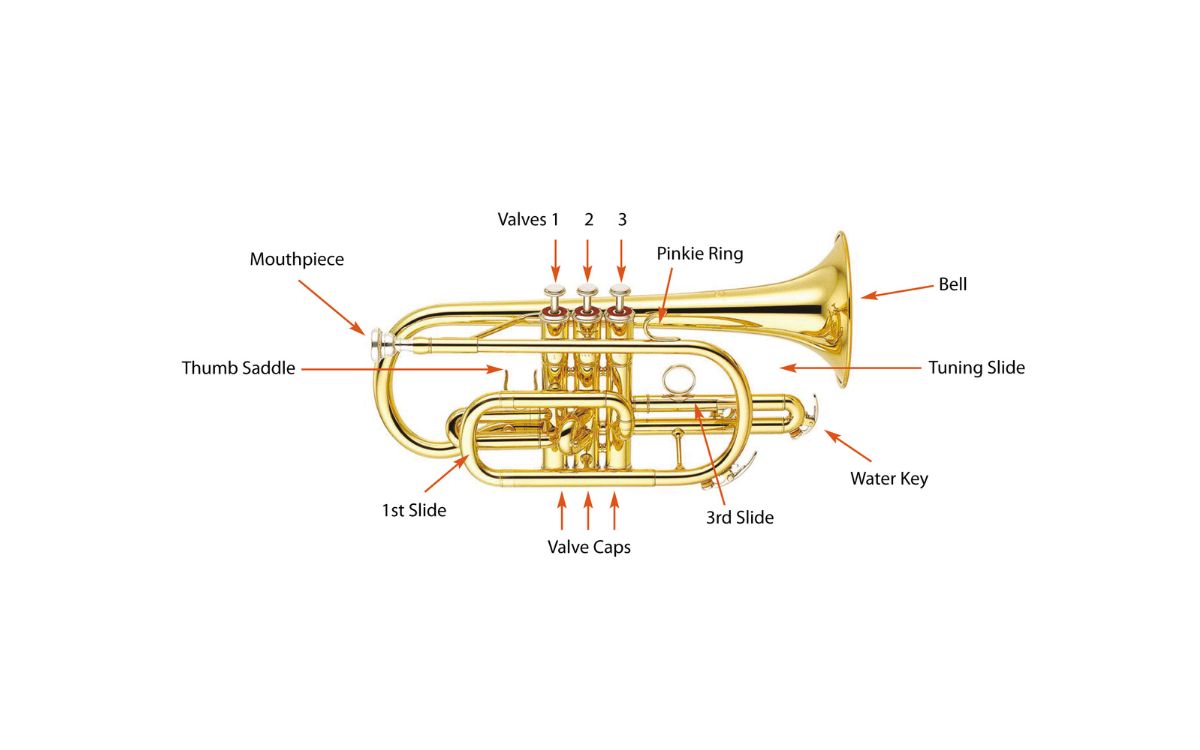

Brass Instruments
How Do Brass Instruments Change Notes
Modified: January 22, 2024
Discover how brass instruments change notes and explore the fascinating mechanics behind these versatile instruments. Learn more about brass instruments and their incredible range of sound.
(Many of the links in this article redirect to a specific reviewed product. Your purchase of these products through affiliate links helps to generate commission for AudioLover.com, at no extra cost. Learn more)
Table of Contents
Introduction
Brass instruments are a fascinating family of musical instruments that have been capturing the hearts and ears of music lovers for centuries. Whether it’s the bold and powerful sound of a trumpet, the smooth and mellow tones of a trombone, or the rich and resonant notes of a tuba, brass instruments hold a special place in the world of music.
What makes brass instruments truly unique is their ability to change notes and produce a wide range of tones. From soaring melodies to intricate harmonies, brass players have the incredible skill to manipulate the instrument to create beautiful music. But how exactly do these instruments change notes and produce such diverse sounds?
In this article, we will explore the inner workings of brass instruments and delve into the techniques that allow musicians to achieve different notes and tones. We will discuss the role of valves in changing notes, the use of slides and tuning techniques, as well as the importance of embouchure and lip buzzing in producing the desired sound. By understanding these mechanisms, we can gain a deeper appreciation for the skill and artistry required to master a brass instrument.
What are Brass Instruments?
Brass instruments are a family of musical instruments that are classified by their construction and the way they produce sound. They are typically made of brass or another type of metal, which gives them their distinct tonal characteristics. Some of the most common brass instruments include the trumpet, trombone, French horn, and tuba, but there are also lesser-known instruments like the cornet, baritone horn, and sousaphone.
One defining feature of brass instruments is their conical or cylindrical shape. This shape allows the instruments to amplify the sound produced by the player, resulting in a powerful and resonant tone. Unlike woodwind instruments, which produce sound by vibrating reeds or blowing across an open hole, brass instruments produce sound through the vibration of the player’s lips against the mouthpiece.
The sound production in brass instruments starts with the player buzzing their lips into the mouthpiece. The buzzing creates vibrations that travel through the instrument and are amplified by its shape. The player then uses various techniques to change the pitch and produce different notes.
Another unique aspect of brass instruments is their versatility. They span a wide range of musical genres, from classical and jazz to marching band and brass ensembles. Whether it’s a soaring trumpet solo, the rich and warm tones of a horn section, or the thunderous bass of a tuba, brass instruments bring depth and color to any musical ensemble.
Brass instruments require a combination of technical skill, breath control, and a keen ear for pitch. Players must master proper embouchure techniques, which involve the positioning of the lips, jaw, and facial muscles to control the sound. They also need to develop a sense of embouchure flexibility to navigate the instrument’s range and execute precise musical phrases.
Overall, brass instruments are a vital component of the musical world, adding excitement, power, and elegance to any performance. Their distinctive sound and ability to convey emotions have made them a staple in orchestras, bands, and solo performances alike. The craftsmanship and artistry that go into creating and playing these instruments are a true testament to their enduring presence in the world of music.
How Brass Instruments Produce Sound
Understanding how brass instruments produce sound is key to comprehending the mechanics behind note changes. Unlike other musical instruments, brass instruments rely on the vibration of the player’s lips against the mouthpiece to create sound. This process is known as “buzzing.”
When a brass player blows air into the mouthpiece and tightly presses their lips together, the air stream causes the lips to vibrate. These vibrations create sound waves that travel through the instrument and are amplified by its specific shape and size.
The length and shape of the instrument play a crucial role in determining the produced pitch. For example, instruments like the trumpet and cornet have a cylindrical tubing with a fixed length, which produces a brighter sound. On the other hand, instruments like the trombone and tuba have a conical shape, which allows for a wider range of pitches and more mellow tones.
As the player changes the tightness and tension of their lips, known as embouchure, the pitch of the sound produced can be altered. By tightening the lips, the player can produce higher notes, while loosening them creates lower notes. This technique allows for a seamless transition between pitches and facilitates playing melodies.
Additionally, the player’s breath control plays a significant role in producing sound and controlling the dynamics. By adjusting the amount of air blown into the instrument, the player can produce softer or louder sounds. A controlled and steady airstream is essential for achieving a clear and consistent tone.
The mouthpiece of a brass instrument also plays a crucial role in sound production. It is typically made of metal and acts as a conduit for the player’s buzzing lips to vibrate against. The shape, size, and backbore of the mouthpiece can affect the timbre and resonance of the sound produced. Brass players often experiment with different mouthpiece options to find the one that suits their playing style and desired sound.
In summary, the production of sound in brass instruments relies on the vibration of the player’s lips, the shape and size of the instrument, the control of embouchure, and the breath control. These factors work together to create the unique and captivating tones that make brass instruments so beloved in the world of music.
The Role of Valves in Changing Notes
While the buzzing of the player’s lips generates the initial sound in brass instruments, the role of valves cannot be overlooked when it comes to changing notes and expanding the instrument’s range. Valves are a key component in many brass instruments, such as the trumpet, cornet, and French horn.
Valves act as a system of air passages that redirect the flow of air through the instrument, effectively lengthening or shortening its length. By using valves, brass players can change the pitch of the instrument and access a wider range of notes.
Most brass instruments have three valves, although some larger instruments may have four or even five valves. Each valve is controlled by the player’s fingers, which are pressed down or released to open or close specific air passages within the instrument. When a valve is depressed, the air travels through an additional length of tubing, effectively lowering the pitch. Similarly, when the valve is released, the air flows through the regular length of tubing, resulting in a higher pitch.
The combination of valve combinations and fingerings allows brass players to play chromatic scales and execute intricate melodies with relative ease. Skilled brass musicians develop a sense of muscle memory and finger dexterity to quickly and accurately manipulate the valves while maintaining a steady airflow.
It’s important to note that valve systems differ slightly between brass instruments. For instance, the piston valves found on trumpets and cornets use a cylindrical piston mechanism, while the rotary valves found on French horns offer a more conical design. Despite these differences, the basic principle of redirecting air through additional lengths of tubing remains the same.
Valves not only provide extended pitch range but also contribute to the overall sound quality and color of a brass instrument. When a valve is engaged, it introduces additional tubing, which can change the resonance and timbre of the notes produced. Brass players use their ears and experience to understand the characteristics and quirks of their instrument’s valves and adjust their playing technique accordingly.
Mastering the use of valves in brass instruments takes time and practice. It requires a combination of finger dexterity, air control, and knowledge of the instrument’s tendencies. Skilled brass players develop an intimate understanding of their instrument’s valve system, allowing them to seamlessly navigate the instrument’s full range and achieve expressive musical performances.
Slides and Tuning Techniques
In addition to valves, many brass instruments, such as the trombone, utilize slides to change notes and achieve accurate tuning. Slides play a crucial role in adjusting the length of the instrument’s tubing, allowing the player to fine-tune their pitch and maintain proper intonation.
The trombone, in particular, relies heavily on its slide mechanism to produce different notes. The player extends or retracts the slide to alter the length of the tubing, which directly affects the pitch. By smoothly and precisely positioning the slide, players can achieve accurate intonation and play in harmony with other musicians.
Slide technique is an essential skill for trombonists, as they constantly need to be aware of the position and movement of the slide while playing. This requires a keen ear for pitch and a sense of muscle memory to execute smooth transitions between notes.
Furthermore, tuning techniques are equally important for all brass players, regardless of whether their instrument has valves or a slide. Brass instruments are sensitive to temperature, humidity, and the player’s airflow, which can affect the instrument’s tuning. To compensate for these variables, players use various techniques to adjust the pitch and achieve proper intonation.
One common technique is adjusting the position of the mouthpiece in the instrument’s receiver. This can be done by slightly pulling the mouthpiece out or pushing it in, which alters the overall length of the instrument. Additionally, players may use alternate fingerings or partials to fine-tune notes that are naturally out of tune.
Beyond these individual adjustments, brass players also rely on their ears and communication with fellow musicians to achieve cohesive tuning. This is particularly important in ensemble settings, where multiple brass instruments play together. Tuning can be accomplished through collective breathing exercises, listening for sympathetic vibrations, and making adjustments based on the overall sound of the ensemble.
Regular maintenance and care of the instrument are vital for optimal tuning. Slides should be well lubricated to ensure smooth movement and prevent sticking. Valves must be properly cleaned and maintained to ensure they are functioning without any air leaks. By keeping their instruments in top condition, brass players can maintain accurate pitch and achieve the desired tonal quality.
Mastering slides and tuning techniques requires a combination of technical skill, ear training, and a thorough understanding of the instrument’s tendencies. Brass players must constantly strive for precise intonation and adapt their playing accordingly, ensuring their instrument is in tune and blending harmoniously with other musicians.
Embouchure and Lip Buzzing
Embouchure and lip buzzing are essential elements in the production of sound and note changes in brass instruments. The way a player shapes their lips and controls the airflow through their instrument greatly impacts the quality and accuracy of the sound produced.
Embouchure refers to the positioning of the player’s lips, jaw, and facial muscles around the mouthpiece of the instrument. It is crucial for achieving proper tone, control, and range. Each brass instrument requires a slightly different embouchure technique, but the general principles remain the same.
When forming embouchure, brass players aim for a firm yet supple seal between the lips and the mouthpiece. The corners of the mouth should be firm to create stability, while the center part of the lips must remain flexible to allow vibrations. The player’s jaw position also plays a role in embouchure, with some instruments requiring a slightly dropped or forward position to maximize resonance.
In addition to embouchure, lip buzzing is a fundamental technique that serves as the foundation for sound production in brass instruments. Lip buzzing involves the player buzzing their lips without a mouthpiece, producing a buzzing sound similar to that of a bee. This buzzing action creates the initial vibration that is then amplified and shaped by the instrument.
By practicing lip buzzing exercises, brass players develop a strong and controlled embouchure. This helps in developing a focused and centered sound, improving overall tone and pitch accuracy. Lip buzzing also aids in building the necessary muscles for proper breath control and endurance.
Furthermore, lip buzzing is an effective tool for warming up and maintaining embouchure flexibility. Players can use various lip buzzing patterns, scales, and intervals to engage the muscles and enhance their playing. It serves as a form of physical and mental preparation before tackling more challenging passages.
While embouchure and lip buzzing are fundamental aspects of playing brass instruments, it’s important to note that they require regular practice and development. Players must strive for consistency and precision in their embouchure formation, ensuring a balanced and controlled sound production.
Additionally, the embouchure must adapt to the specific requirements and characteristics of each instrument. For example, smaller mouthpieces, such as those found on trumpets, require a focused and tighter embouchure, while larger mouthpieces, like those on tubas, demand a more relaxed and open lip position.
Overall, both embouchure and lip buzzing techniques are vital for brass players to achieve the desired sound, control the instrument’s range and dynamics, and maintain consistent performance. Through dedication and practice, brass musicians refine their embouchure and lip buzzing skills, unlocking the full potential of their instruments and creating captivating musical experiences.
Conclusion
Brass instruments are truly remarkable, offering a range of beautiful sounds and expressive melodies. As we have explored, these instruments create sound through the buzzing of the player’s lips and the manipulation of air flow. The use of valves, slides, embouchure, and lip buzzing techniques allows brass players to change notes, adjust pitch, and produce a wide variety of tones.
Valves play a vital role in brass instruments, offering a system of air passages that redirect airflow and change the length of the instrument’s tubing. The skilled manipulation of valves enables brass players to navigate chromatic scales, execute complex melodies, and achieve accurate intonation.
Slides, on the other hand, are essential for instruments like the trombone, offering a means to adjust the instrument’s length and achieve precise tuning. With slide technique and careful control, trombonists can fine-tune their pitch, play in harmony with other musicians, and bring their unique timbre to the forefront.
Embouchure and lip buzzing are crucial components in the production of sound and note changes in brass instruments. The precise formation and control of the player’s lips, jaw, and facial muscles create the foundation for a focused and resonant sound. Regular practice of embouchure and lip buzzing exercises strengthens the muscles, improves breath control, and enhances overall playing ability.
By mastering these techniques, brass players bring life to their instruments, capturing the hearts and ears of audiences worldwide. From the soaring melodies of trumpets to the rich harmonies of horns and the thunderous bass of tubas, brass instruments offer a diverse range of sounds and emotions.
In conclusion, brass instruments are a testament to the beauty and versatility of music. The combination of buzzing lips, valve and slide mechanisms, embouchure techniques, and lip buzzing exercises brings forth the enchanting sounds that the world adores. Whether in symphony orchestras, jazz bands, marching bands, or solo performances, brass instruments have the power to captivate, inspire, and create unforgettable musical experiences.

